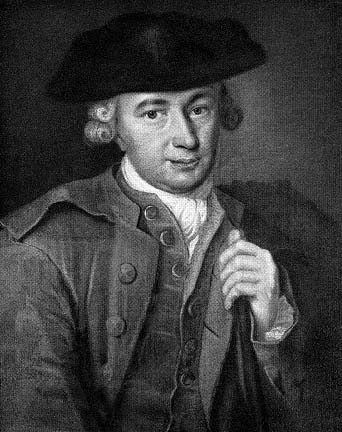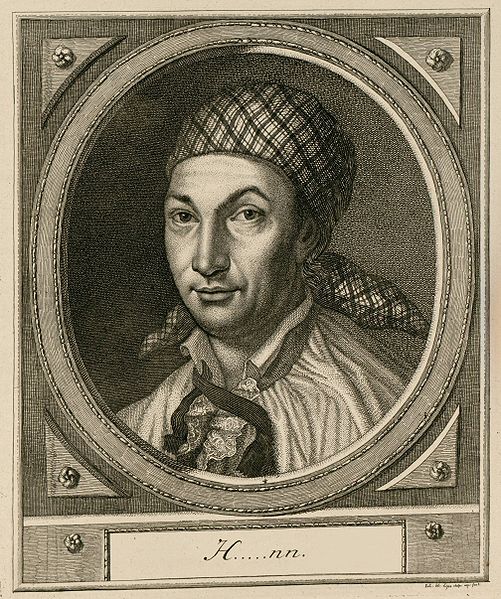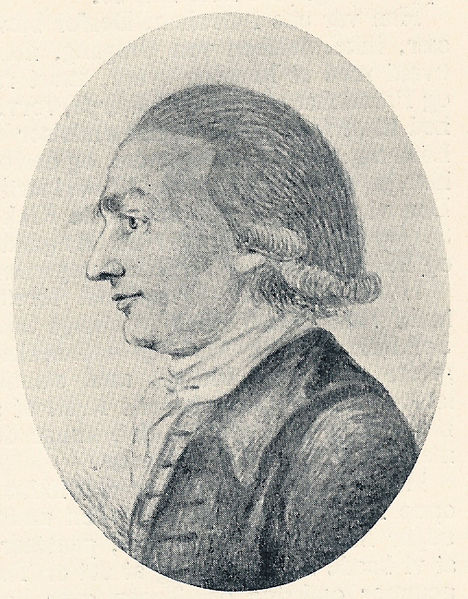<Back to Index>
- Philosopher Johann Georg Hamann, 1730
PAGE SPONSOR



Johann Georg Hamann (August 27, 1730, Königsberg – June 21, 1788, Münster) was a noted German philosopher, a main proponent of the Sturm und Drang movement, and associated by historian of ideas Isaiah Berlin with the Counter - Enlightenment.
He was destined for the pulpit, but became a clerk in a mercantile house, and afterward held many small public offices, devoting his leisure to study. He wrote under the nom de plume of “the Magus of the North” (German: Magus im Norden).
His distrust of reason and the Enlightenment (“I look upon logical proofs the way a well bred girl looks upon a love letter” was one of his many witticisms) led him to conclude that faith in God was the only solution to the vexing problems of philosophy.
Hamann was a Pietist Lutheran, and a friend (while being an intellectual opponent) of the philosopher Immanuel Kant. He was greatly influenced by David Hume. This is most evident in Hamann's conviction that faith and belief, rather than knowledge, determine human actions. Also, Hamann asserted that the efficacy of a concept arises from the habits it reflects rather than any inherent quality it possesses. Hamann famously used the image of Socrates, who often proclaimed to know nothing, in his Socratic Memorabilia, an essay in which Hamann critiques the Enlightenment's dependence on reason.
Hamann was one of the precipitating forces for the counter - enlightenment. He was, moreover, a mentor to Herder and an admired influence on Goethe, Jacobi, Hegel, Kierkegaard, Lessing and Mendelssohn. Hans Urs von Balthasar devoted a chapter to Hamann in his volume, Studies in Theological Styles: Lay Styles (Volume III in the English language translation of The Glory of the Lord series).
Hamann's writings consist of small essays. They display two striking tendencies. The first is their brevity, in comparison with works by his contemporaries. The second is their breadth of allusion and delight in extended analogies. For example, his work Golgatha and Scheblimini! By a Preacher in the Wilderness (1784) was directed against Moses Mendelssohn's Jerusalem, or on Religious Might and Judaism (1782). His work was also significantly reactive and reparative: rather than advance a “position” of his own, his principal mode of thinking was to respond to others' work.
Hamann was a lutenist, having studied this instrument with Timofey Belogradsky (a student of Sylvius Leopold Weiss), a Ukrainian virtuoso then living in Königsberg.
Fragments of his writings were published by Cramer, under the title of Sibyllinische Blätter des Magus aus Norden (1819), and a complete edition by Roth (7 vols., 1821 - 25, with a volume of additions and explanations by Wiener, 1843). Hamann's des Magus in Norden Leben und Schriften, edited by Gildemeister, was published in 5 vols., 1857 - 68, and a new edition of his Schriften und Briefen, edited by Petri, in 4 vols., 1872 - 74.